


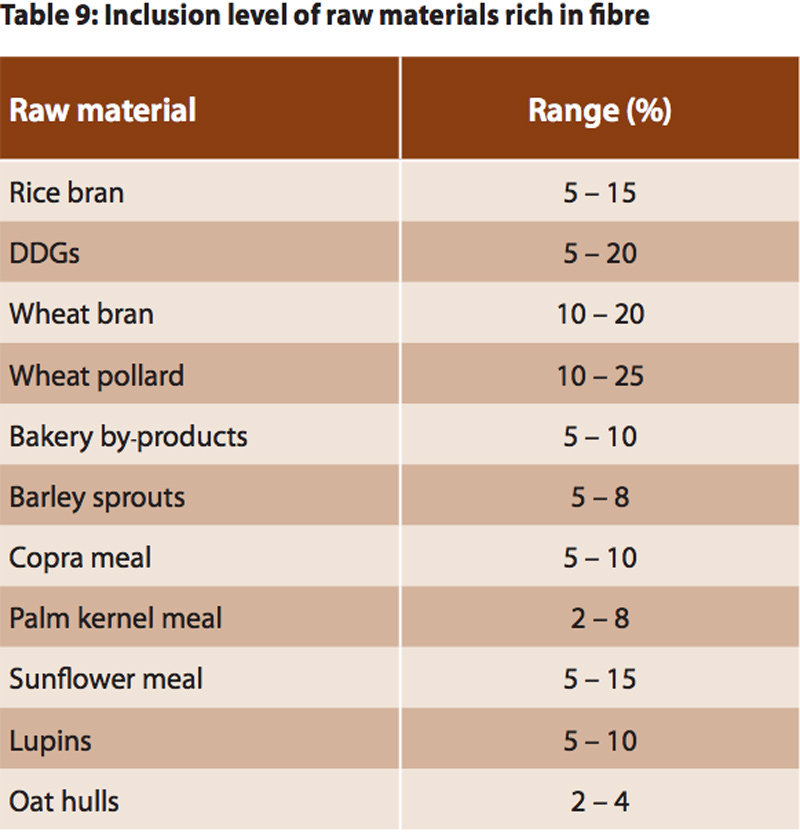
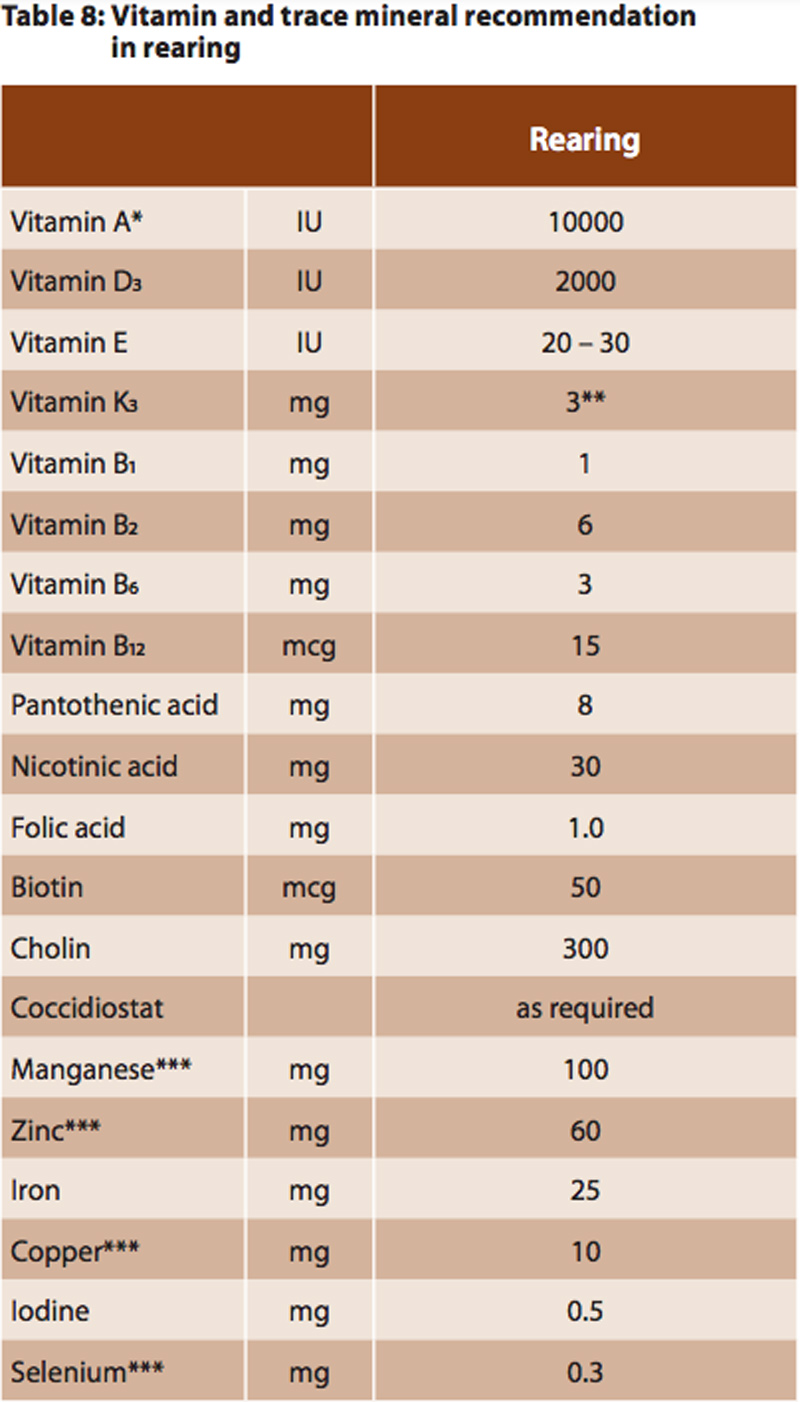


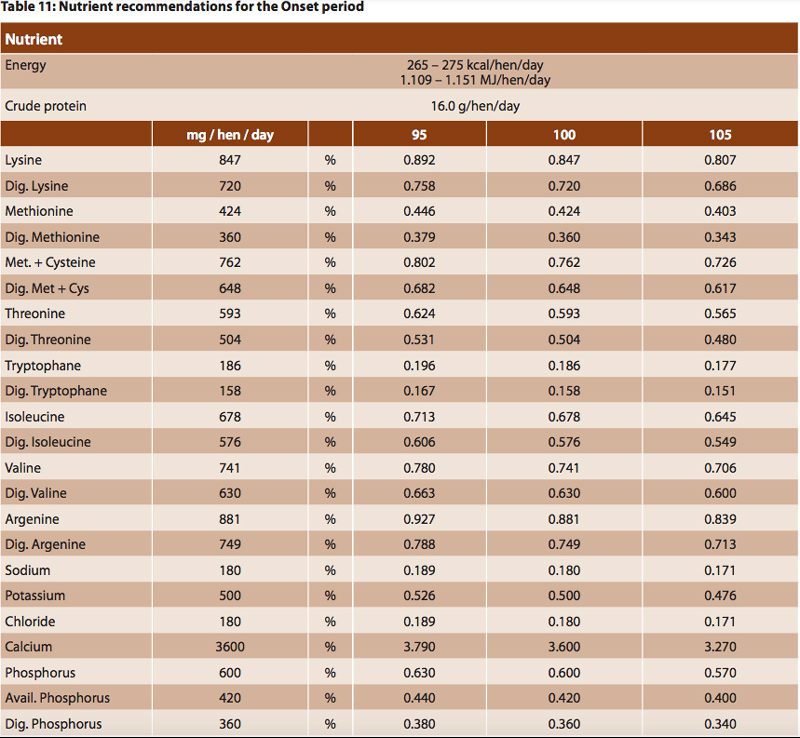
• Egg mass changes: DO NOT change amino acids if the % lay drops unless the egg mass (% lay x size egg) is dropping too;
• Body weight changes: body weight affects energy needs, around +/-4 kcal every 50 grams of body weigh change;
• Calcium and phosphorus requirement changes: the phosphorus requirement decreases and the calcium requirement increases as the bird gets older;
• Feed intake changes: housing temperature will impact the feed intake. Hot temperature reduces the feed intake and vice versa.


• Adapt the data in table 15 to suit the
feed intake target.
• Example: Av P requirement after peak 380
mg: if feed intake is 115 grams, the minimum amount in feed should be 0.33 %.


• Levels of Ca and P must be adapted as
the layer hen gets older.
• An excess or deficiency of P can cause
eggshell issues in the short or long term.
• Coarse limestone is necessary for eggshell quality. It can be replaced in part by
oyster shells.
• Table 23 indicates the limestone particle
ratio in layers.
• Table 22 indicates how much grit should
be added directly to the feeding system.
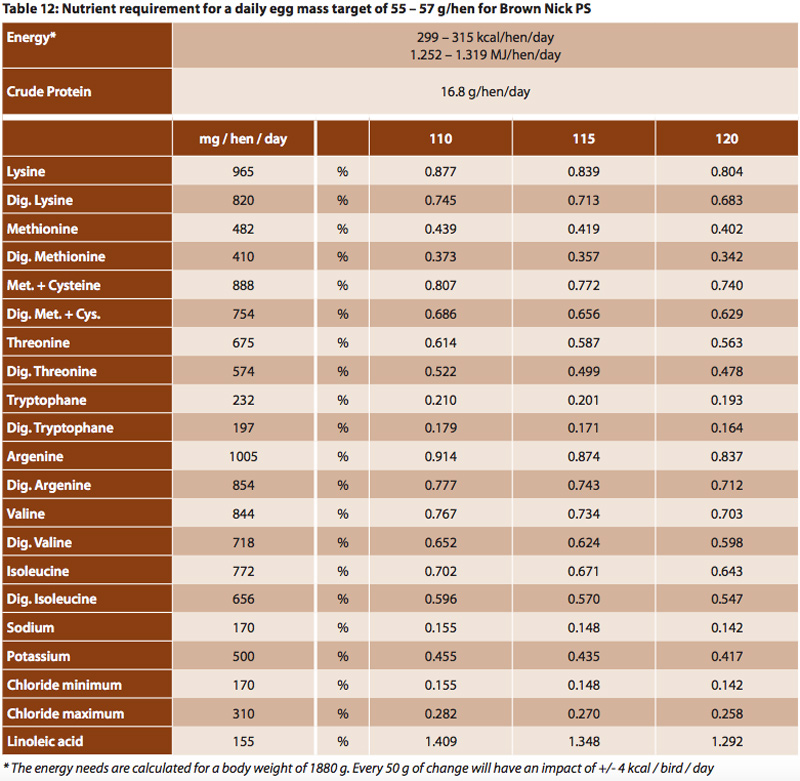

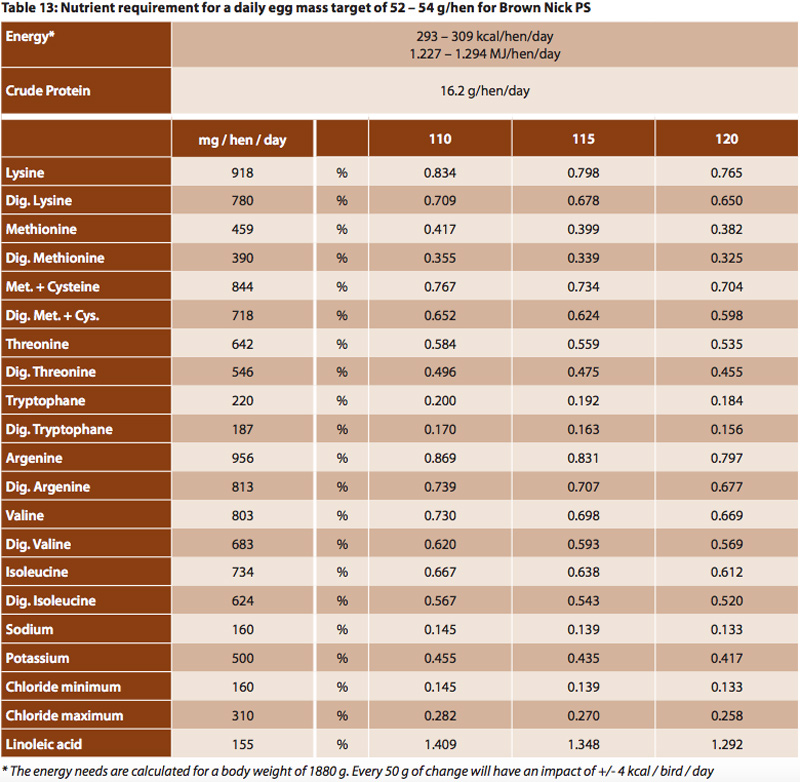

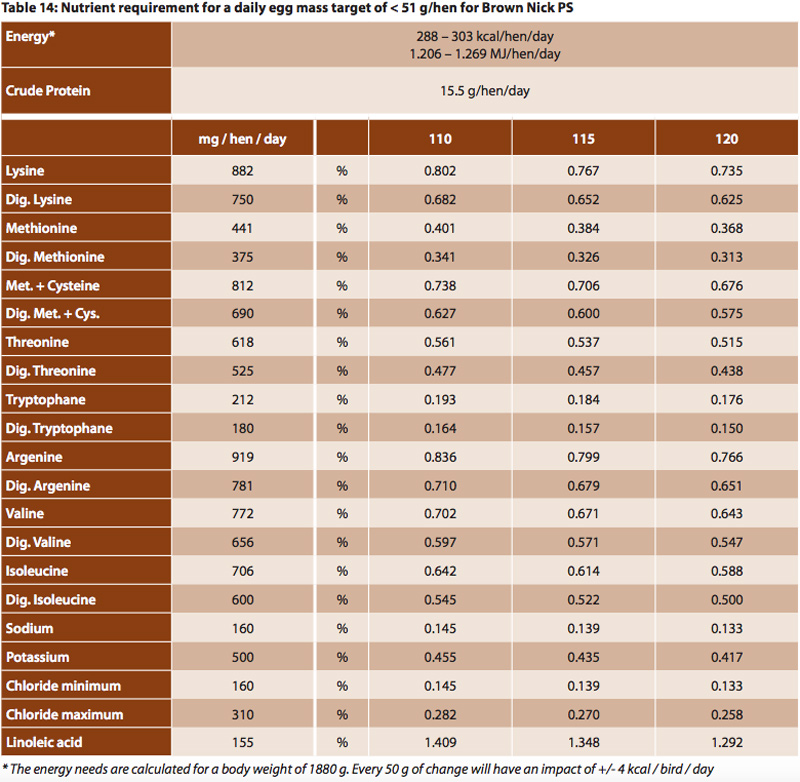
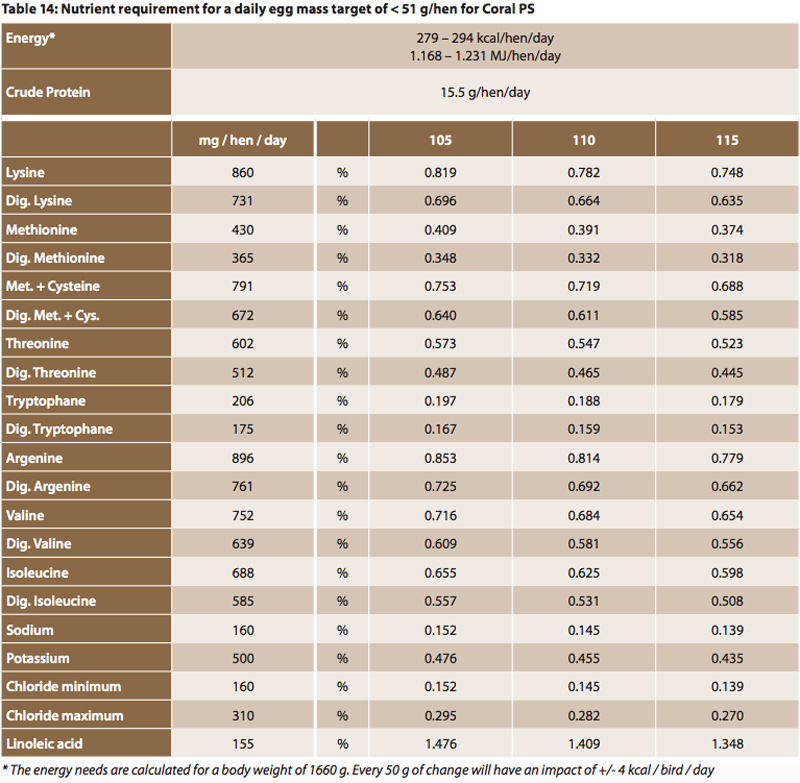



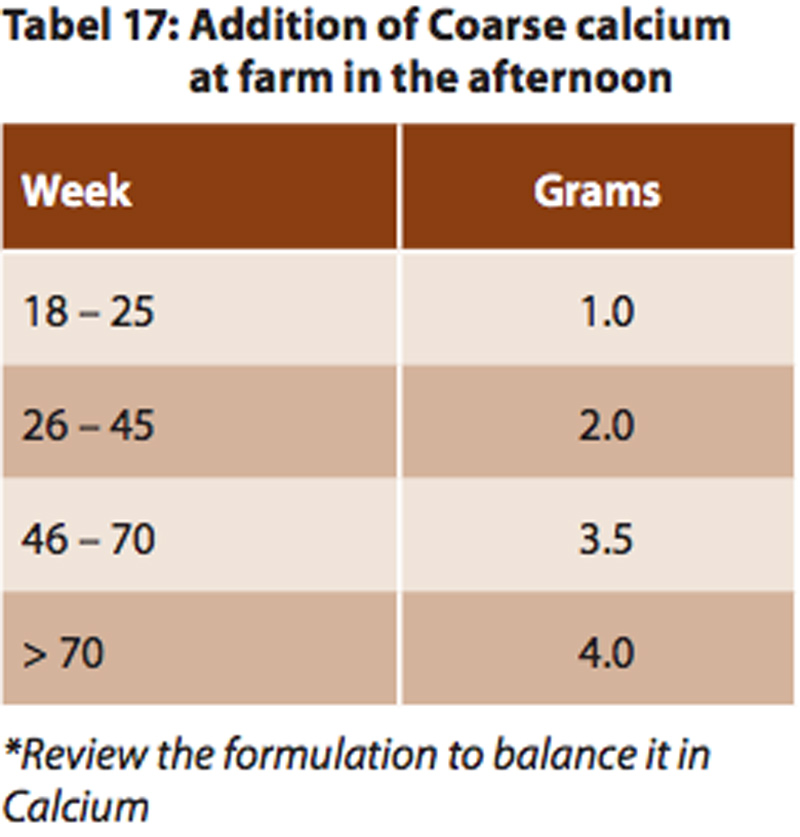
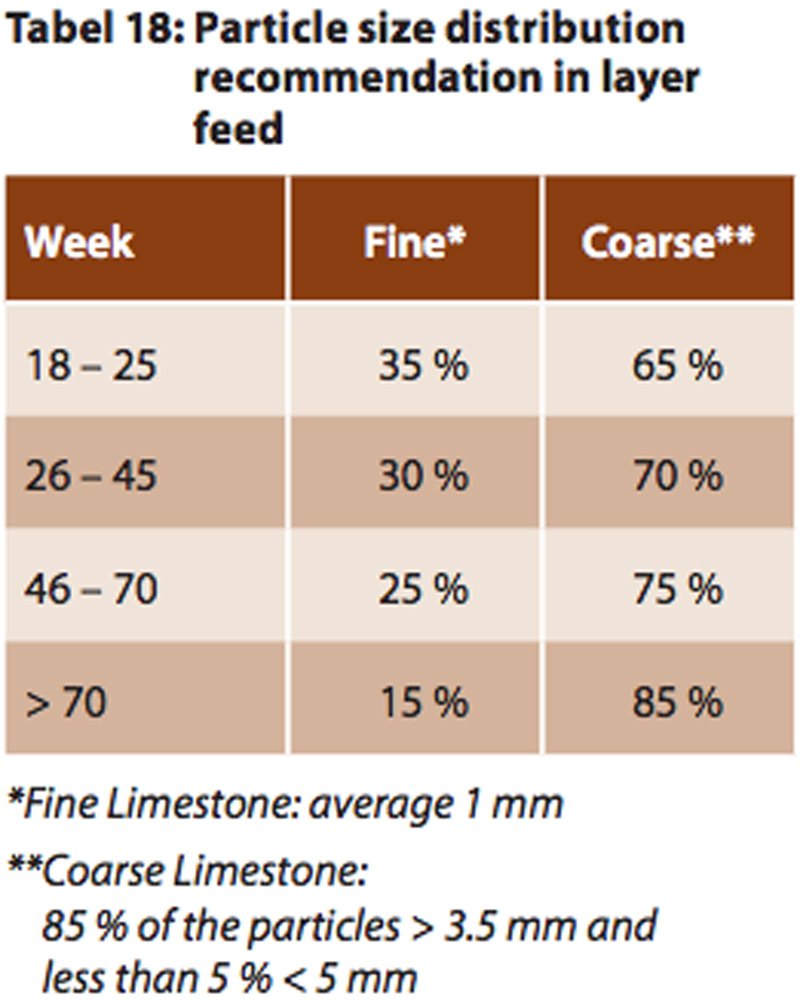
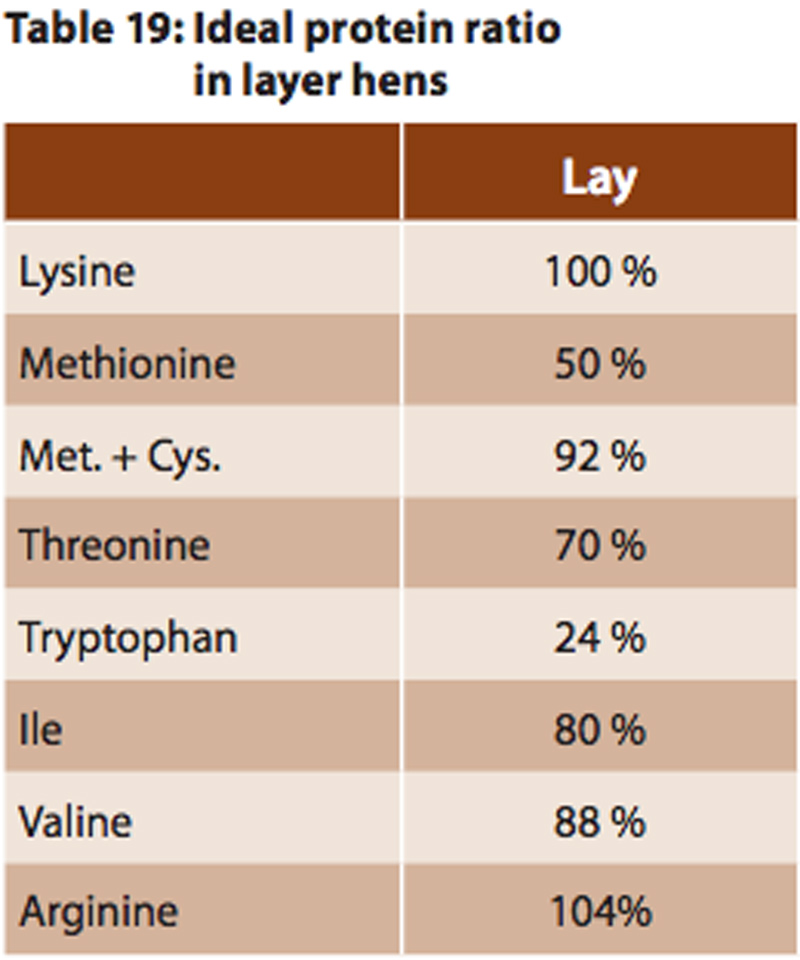
Mash feed is the most commonly used feed throughout the world. Layer hens tend to eat the larger particles avoiding the fine particle s which is where most of the key nutrients are. Therefore, it is vital for successful nutrition to have a uniform particle structure. It is even more important in non-beak treated birds. Crumble and pellet forms can be used as long as the structure holds in the feeding system of the birds and it doesn’t become a fine particle mash.
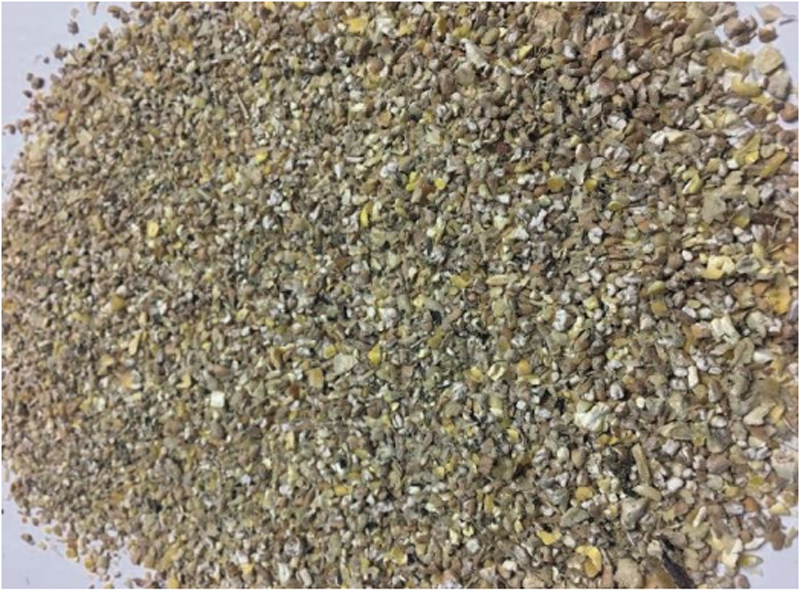
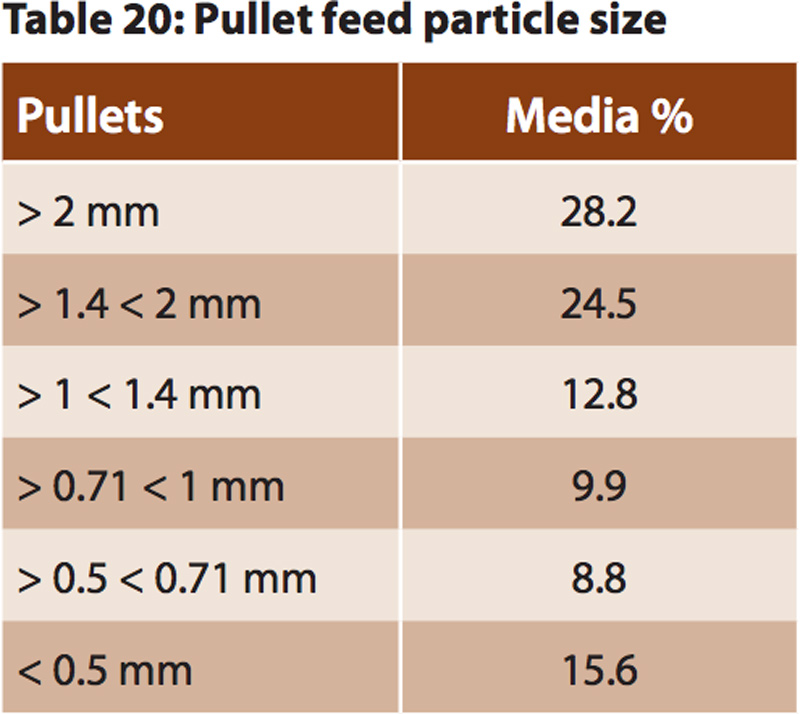

Good information is needed to formulate a realistic diet. A combination of available literature, wet chemistry methods and/or NIR is necessary to generate an updated matrix of the raw materials we use.
There are no specific guidelines in place, however the lower the contamination, the better the performance parameters. Ensure adequate control measures are in place to prevent microbiological risk factors in the diet. Extremely important is the prevention of SALMONELLA; stronger control measures than laying hens.
Oils in the feed mill and fat in the diet are the commonest components of oxidation. The quality control plan of raw materials should include analysis of the oxidation status of oils, evaluating at least two parameters of the available methods.
Follow the guidelines available in your country and literature to prevent negative effects on layer hen health and production. Adapt the use of mycotoxin binders to suit the level of risk in the diet and the contamination load in the raw materials.
Good understanding of the ANF will allow higher or lower inclusion levels of the raw materials.
Welcome! Your admission is granted, please allow for 2 seconds as the door to our VIP room is opening for you right now! Please come in!
Don't have an account? Sign up now
